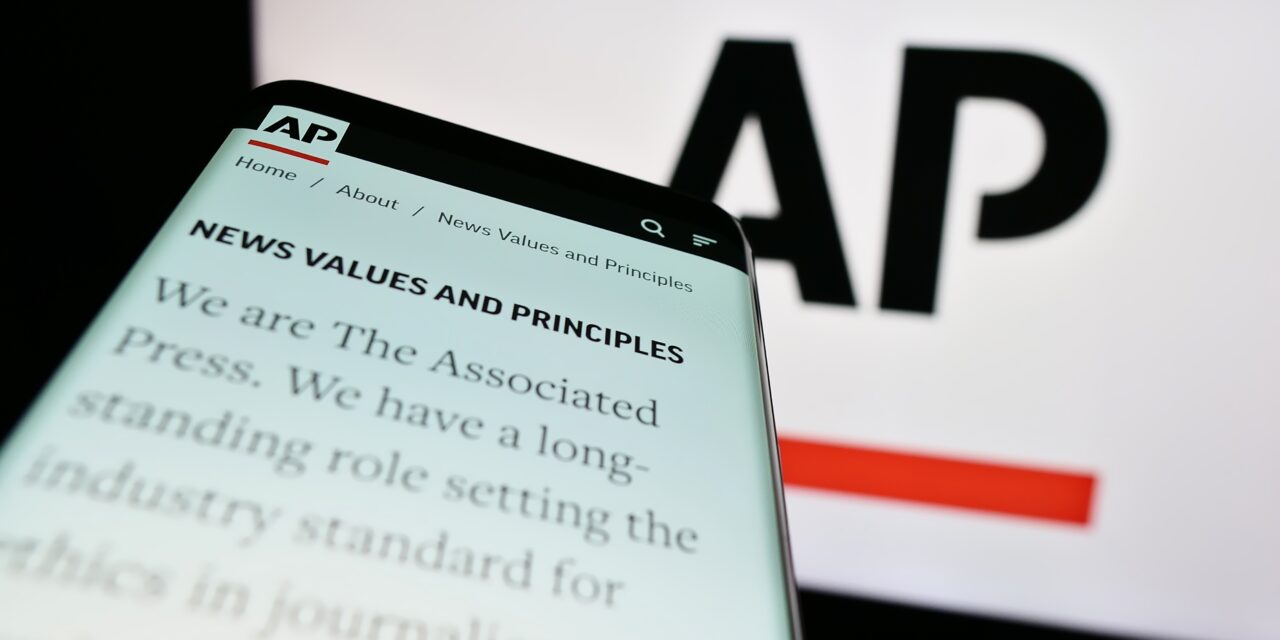Since its first iteration in 1909, then titled “The Associate Press Rules Regulations and General Orders,” the AP Stylebook has been the go-to for scores of journalists committed to accuracy and consistency for everything from grammar and punctuation to terminology and reporting style.
Nicknamed the “Journalist’s Bible,” the guide’s reach extends well beyond the Associated Press. Many smaller outlets and freelance reporters use it, giving the publication an oversized influence on hundreds of millions of people all around the world.
Peter J. Kreeft is a professor of philosophy at Boston University. A committed believer in Jesus Christ, he’s an academic who appreciates the power of words to shape thought and perspective. “Control language and you control thought,” he wrote. “Control thought and you control action; control action and you control the world.”
Deliberately, if not always with nefarious intent, the Associated Press is attempting to control language and, by extension, thought, action, and the world.
Just last week, the press agency issued new guidelines on a wide array of subjects, including abortion, sex, and the climate, among other hot button topics.
Abortion
“Don’t use the terms pro-life, pro-choice or pro-abortion unless they are in direct quotations or proper names,” AP advised. “Avoid abortionist, which connotes a person who performs clandestine abortion.”
Merriam-Webster defines an “abortionist” as “one who performs abortions.” That the term connotes something dark has everything to do with how abortionists make their living – killing children. I’m sure AP wouldn’t want anyone to write that either.
Gender and Sexual Orientation
The Associated Press is especially careful and nuanced in this category. According to its officials, the terms “out” and “openly” imply that homosexuality is “inherently shameful.” Also, reporters aren’t to qualify someone who identifies as same-sex attracted as being an “avowed” or “admitted” homosexual.
It might surprise you to know AP warns its reporters to “be aware of nuances and pitfalls in the use of “female” and “woman/women.”
Why?
According to the latest style guide, “female primarily describes sex, not gender.” And AP suggests people who have the audacity to use the term to describe both “can be seen as emphasizing biology and reproductive capacity over gender identity.” Doing so, they claim, can “sometimes carry misogynistic tones that may vary by race, class and other factors.”
Of course, the reason people use the term “female” is because it’s one of two sexes – and “gender identity” is fantastical, not factual.
Climate
Merriam-Webster defines “climate” as “the average course or condition of the weather at a place” – but not AP. “The climate story goes beyond extreme weather and science,” states the agency. “It also is about politics, human rights, inequality, international law, biodiversity, society and culture, and many other issues.”
Silly us – we always thought it had to do with the weather.
Incidentally, don’t expect to read anything in AP from those of us committed to calling out nonsense. That’s because reporters are instructed to “Avoid false balance.”
“For example, coverage of a study describing effects of climate change need not seek ‘other side’ comment that humans have no influence on the climate,” states the press agency.
For Perspective
Christians are instructed in Scripture to be sensitive to language and use caution when communicating. It was Solomon who urged, “Those who guard their mouths and their tongues keep themselves from calamity” (Proverbs 21:23). The apostle Paul cautioned, “Let your speech always be gracious, seasoned with salt, so that you may know how you ought to answer each person” (Col. 4:6).
But it’s also critical that we’re aware of “lying lips” (Proverbs 12:22) and to “not be deceived” (Gal. 6:7) by the many sources committed to confusing and communicating the many things that just aren’t true.
Image from Shutterstock.






